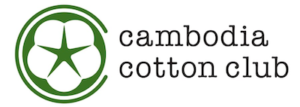I first reported on the use of insecticides in the cultivation of organic cotton on December 30, 2012. At that time, I used the GOTS standard, which is considered the strictest certification body in the world, as my basis. It was upgraded in March of this year.
The newly published version 4, pages 24-26, contains a list of resultant insecticides that can be used. A Japanese bilingual version can be downloaded from the link below.
http://www.global-standard.org/images/GOTS_Version4-01March2014English-Japanese.pdf
Some describe it as "'Heavy metal free'". However, "heavy metal free" is only considered
Antimony:,Arsenic:, Barium:,Cadmium:,Cobalt: 、Copper:, Chromium:,Iron:, Lead:,Manganese:, Nickel:,Mercury:,Selenium:,Silver:,Zinc:,Tin
and the like "are cases where the limit value is not exceeded.
In GOTS certification, which is considered the most stringent in the world, a wide range of hazardous chemicals are used.
Frankly speaking, I think it would be confusing for consumers to describe the product as "free of pesticides and chemical fertilizers" according to the above criteria.
I called the Consumer Affairs Agency for a telephone interview. The bureaucrat in charge told us that there was a possibility of violating the "Act against Unjustifiable Premiums and Misleading Representations.
The following link contains an explanation of the Unjustifiable Premiums and Misleading Representations Act.
http://www.caa.go.jp/representation/pdf/110914premiums_1.pdf
The bureaucrat (female) in charge was surprised and said, "Oh, I thought they didn't use any pesticides or chemical fertilizers…."
Further, the more detailed story is that there is a possibility of "misrepresentation of superiority". Superiority misperception is "misleading consumers into believing that the advertised product or service is better than the actual product or service.
The Consumer Affairs Agency's Labeling Division is in charge of investigating whether a product is misleading or not. There are two types of investigations depending on the degree of misrepresentation.
○ In minor cases, the case is undisclosed with administrative guidance. The company is called by the Consumer Affairs Agency and the officer in charge will give oral guidance.
○ In serious cases, a measure order is issued. A measure order will be reported in the national newspapers.
Whether it is a good misrepresentation or not depends on how the consumer received the definition of organic cotton.
The Consumer Affairs Agency has a department in charge of misrepresentation. If a consumer tells the Consumer Affairs Agency that he or she has been provided with information and then explains that he or she bought an organic cotton product from company XX because it was explained that this cotton product was pesticide-free and chemical fertilizer-free, but the actual production background of the product is different from the explanation he or she had heard, an investigation by the Consumer Affairs Agency's Labeling Division will begin.
( to be continued )
